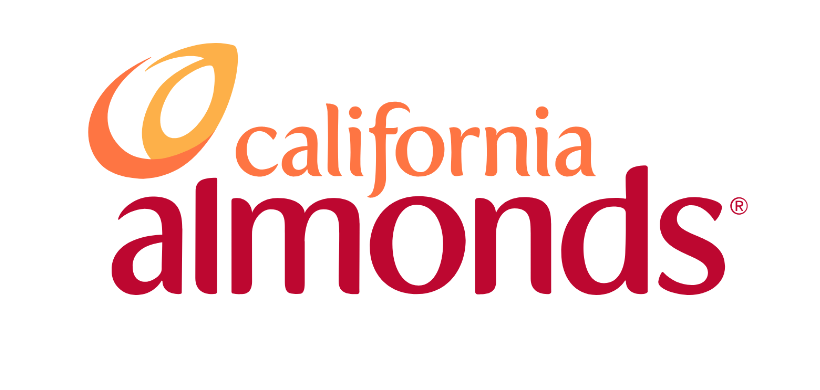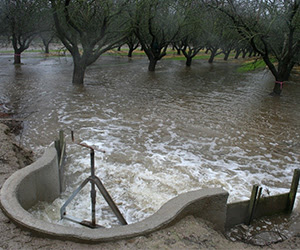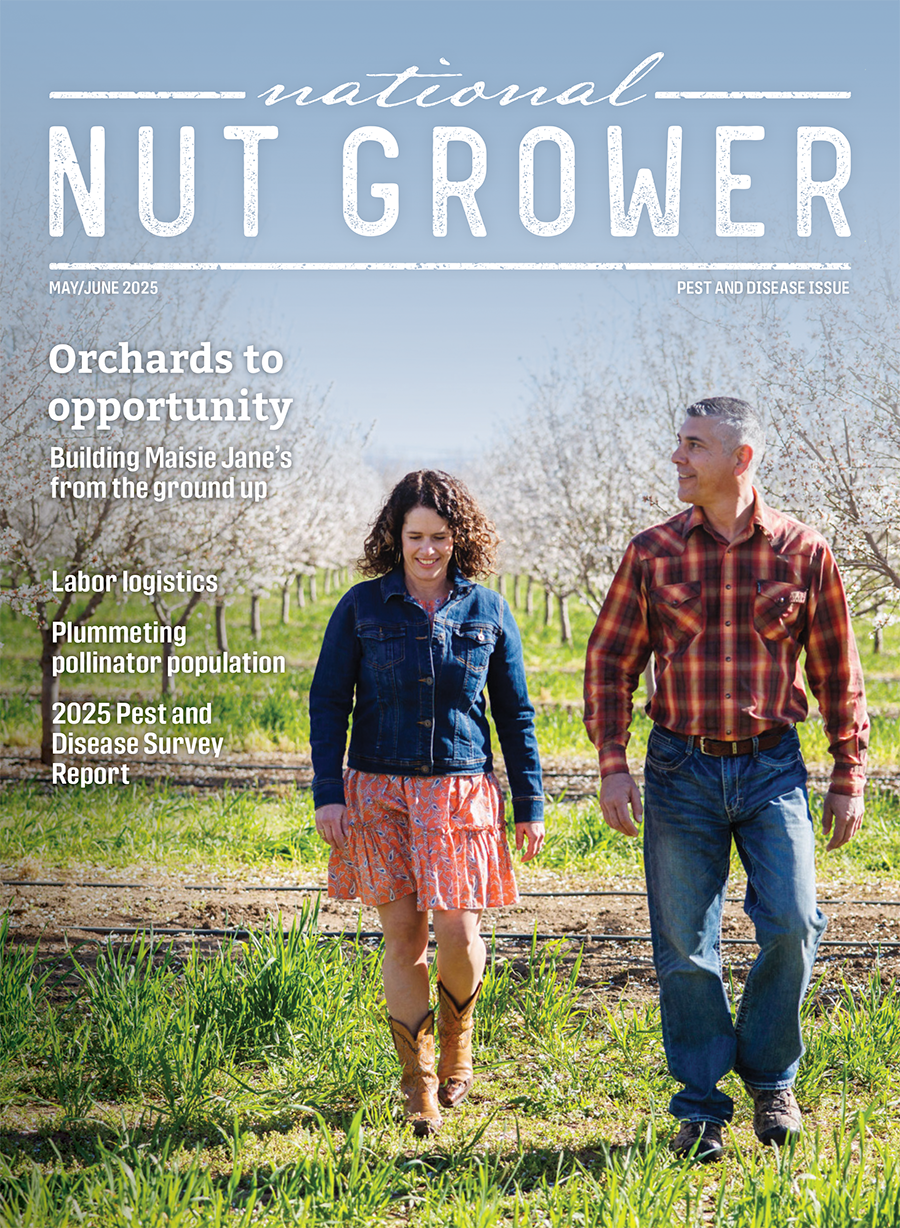
Jan 6, 2022Almond Board offers Introduction to Groundwater Recharge guide
Growers don’t have any control over how much rain and snow falls in any given year, nor how much of that water is captured behind the dozens of dams up and down the state. However, more and more almond growers can play an important part by helping to recharge aquifers that have been tapped during extended periods of drought.
That second scenario – helping to replenish underground water supplies that have been pumped to make up for little or no surface deliveries – is the focus of an exciting new resource from the Almond Board of California (ABC).
The Introduction to Groundwater Recharge guide was unveiled earlier this month at The Almond Conference 2021 in Sacramento. In coordination with Sustainable Conservation and other key collaborators, the guide is intended to be a roadmap for growers interested in learning more about ways to use their dormant winter orchards, or specially designed basins on their property, to recharge aquifers.
Potential opportunity for growers
“Part of the solution is in your hands,” Jesse Roseman, ABC’s senior specialist for agriculture and regulatory affairs, told growers in the audience during a panel discussion on water at the conference. “On-farm recharge (OFR) is one of the most efficient ways to put water back in the ground. We really need the scale of almond orchards. Working land is such a critical piece of this solution and one that farmers can participate in.”
On-farm recharge is defined as “the application of surface water above crop demand in agricultural fields such as almond orchards using existing or supplemental irrigation infrastructure for the purpose of recharging the aquifer.”
For growers who have access to surplus surface water and the right soil conditions, the guide lays out three ways they can begin to recharge underground water supplies. It also includes real-life results from growers in the Sacramento and San Joaquin valleys who participated in trials with positive results over the past decade. Recharge is particularly important in the San Joaquin and Central Valleys, where many underground basins are designated as “critically overdrafted.”

What do growers need to know?
The guide addresses four key questions growers should answer when considering whether OFR can work for them:
- Do I have access to surface water for recharge?
- Is my orchard suitable for recharge?
- What recharge methods are available?
- What orchard management changes are necessary to perform recharge?
And discusses the three main ways to implement on-farm recharge:
-
Flooding dormant orchards – The most thought of method where surface water is applied to orchards during the winter. In many of the cases, this involved flooding orchards during the dormant season in between storms. For this method, growers must have access to winter surface supplies and soils that allow for deep percolation. Flood irrigation valves and flow meters are also necessary. The guide includes common and alternative ways to apply surface water for OFR.
-
Reverse tile drains – This method is considered subsurface groundwater recharge using reverse tile drains. Conventional tile drain systems typically move water out of the soil in fields with high water tables to avoid anoxic conditions that are harmful to crops. The OFR adaptation of reverse tile drains applies excess water below the root zone. The guide says one of the key benefits of a reverse tile drain system is that it does not require saturation of the root zone, thereby allowing water application without impact to growing season considerations. This method can be expensive as pre-planting orchard modifications need to be performed. Ideal soil conditions are sandy loam in the first few feet and a sandy layer below the root zone that extends down to the water table.
-
Recharge basins – The final OFR method discussed in the guide is the use of recharge basins, which can be built by growers on land adjacent to an orchard or developed on a larger scale by water districts or even Groundwater Sustainability Agencies (GSAs). In the case of growers, OFR basins typically are smaller and serve many functions as flood releases may only be available every few years. Growers may also identify natural depressions as potential mini-basins, or parts of their property that have good recharge characteristics but are less ideal for crop production.
Time to act is now
Recharging aquifers will continue to take on greater importance as the Sustainable Groundwater Management Act (SGMA) is implemented over the next 20 years. SGMA divides California into 515 groundwater basins, 94 of which must be locally managed to preserve and replenish aquifers and tackle the problem of land subsidence.
At the TAC 2021 conference water session, water use expert Scott Hamilton estimated that based on our agricultural, domestic and environmental needs, the San Joaquin Valley is short 3 million acre feet each year. Without a comprehensive strategy to recharge groundwater basins, Hamilton estimated that as many as 1 million acres could be taken out of agricultural production in the Central Valley, amounting to a $7 billion annual hit to the economy.
Paul Gosselin, who oversees SGMA as the deputy director of the California Department of Water Resources, said 40% of the state’s water comes from underground sources in an average year. However in dry years, that figure soars to 60% and underscores the need to protect aquifers especially in the face of more frequent droughts.
“Local agencies, growers and farmers must find strategies to reduce groundwater use,” said Gosselin, adding the state “must consider the impact of all groundwater users, including farmers.”
Gosselin and other panelists also encouraged almond growers and others in the ag industry to get involved with their local Groundwater Sustainability Agencies.
“The time is now to build that sustainable future,” he said.
– Almond Board of California
Photo: Almond Board of California









